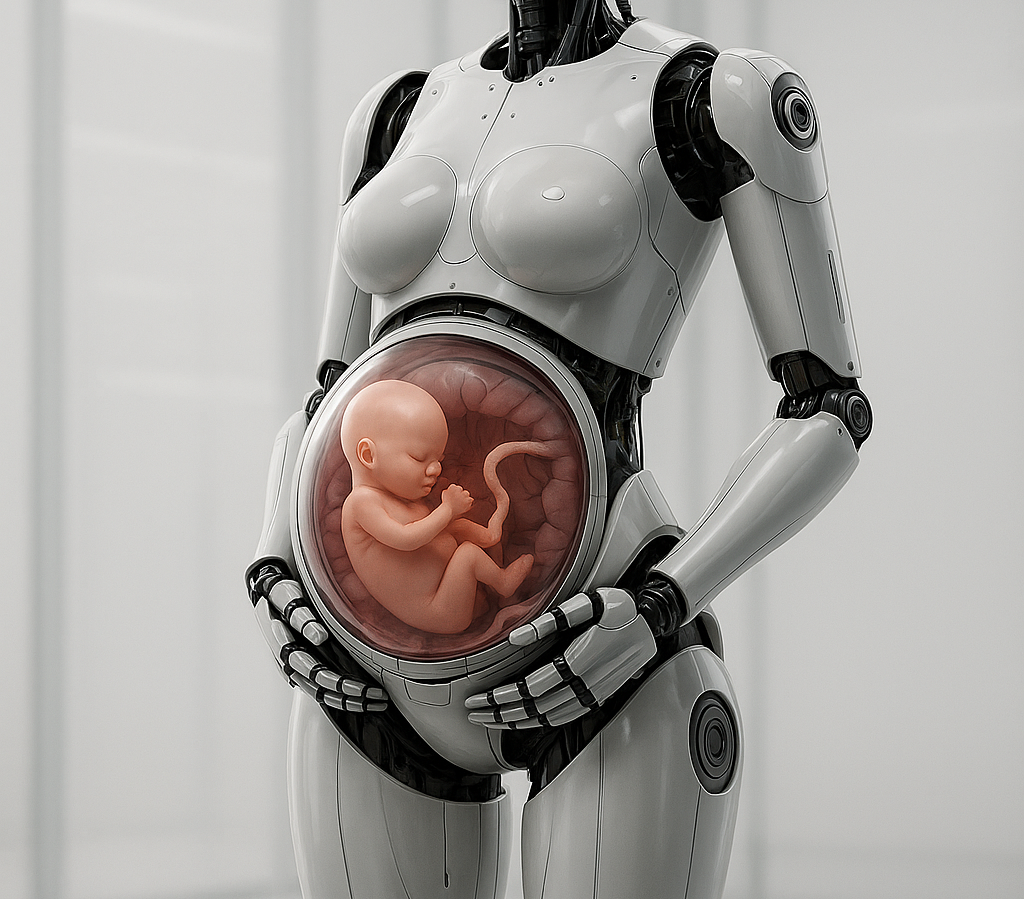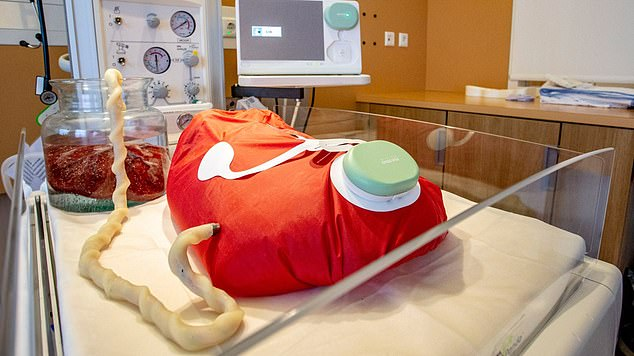Pregnancy robot technology is at the center of global debate after China revealed the world’s first humanoid designed to carry and deliver a live baby. Scientists claim this invention could change how humans view reproduction, but it has also raised deep ethical concerns.

The machine is being developed with an artificial womb that nourishes a baby through a nutrient system, just like a human body. According to early reports, the robot is expected to launch next year and could cost around 100,000 yuan, which is roughly 13,700 US dollars. This makes it a high-end but groundbreaking product that has already captured worldwide attention.
The project is being led by Dr. Zhang Qifeng, founder of Kaiwa Technology. Unlike a traditional incubator, his vision is for a humanoid robot that not only nurtures the baby but also simulates the full journey from conception through birth. He explained that artificial womb technology has reached what he calls a mature stage. The next step is to integrate this system into the robot’s abdomen, creating the possibility for humans and machines to interact in ways that make pregnancy possible outside the human body.
Dr. Zhang admitted that legal and ethical issues are unavoidable. He stated that his team has already organized forums with authorities in Guangdong Province and submitted proposals to address policy and legislative questions. Despite this, many questions remain unanswered, especially regarding how fertilization would take place and how embryos would be implanted into the artificial womb.
The announcement was made during an interview on Douyin, the Chinese version of TikTok. It quickly spread online, sparking heated arguments across social media. Many people criticized the concept as unnatural, raising fears about morality, human values, and the future role of mothers in society. Some argued that removing the maternal bond would be harmful to a child. Others questioned where eggs would come from and how they would be handled.
Not everyone opposed the idea. Some supporters highlighted the potential benefits, particularly for women who face health risks during pregnancy. They argued that this technology could reduce suffering and even save lives.
One online comment noted that many families spend large sums on artificial insemination without success, and the pregnancy robot could be a breakthrough for them.

This is not the first time science has attempted to grow life outside the human womb. In earlier experiments, scientists managed to keep premature lambs alive for several weeks inside an artificial womb known as a biobag. The system provided oxygen, nutrients, and a protective layer of amniotic fluid, allowing the lambs to grow normally. After about 28 days, lambs that would likely have died instead survived, gained weight, and developed naturally.
While the biobag worked more like a highly advanced incubator, the pregnancy robot goes further by aiming to carry a fetus from conception through birth. This shift has sparked comparisons to science fiction, but researchers insist it could become reality within years.
Opposition to artificial wombs is not new. Since the 1970s, feminist voices have warned that such technology could undermine women’s roles in society. Writer Andrea Dworkin once described artificial wombs as the possible end of women. In one of her statements, she asked whether men would still value women if artificial wombs removed the need for natural pregnancy.
In 2022, researchers at The Children’s Hospital of Philadelphia published an article raising ethical concerns. They warned that artificial wombs could devalue pregnancy and diminish the unique meaning and fulfillment many women find in carrying a child. These concerns highlight the possibility that science might reduce human experiences into processes controlled by machines.
Despite controversy, public opinion is divided. A survey from earlier this year revealed that 42 percent of young adults between 18 and 24 support the idea of growing a fetus entirely outside a woman’s body. This shows that younger generations may be more open to technology reshaping childbirth.
The concept has even appeared in popular culture. The 2023 film The Pod Generation presented a futuristic world where couples use detachable artificial wombs, or pods, to share pregnancy equally. While fiction, the film echoes many of the questions society is now facing about the balance between technology and human life.
Supporters of the pregnancy robot argue that it could help address China’s rising infertility problem. Reports show infertility rates in China increased from 11.9 percent in 2007 to 18 percent in 2020. Local governments have already started covering treatments such as IVF through health insurance to support couples. The pregnancy robot is seen as another possible solution for families struggling to conceive.
Still, critics argue that even if the technology works, society may not be ready for it. The pregnancy robot challenges not just biology but also culture, tradition, and identity. It raises questions about the definition of parenthood, the value of the maternal bond, and whether children born this way would be viewed differently.
The debate shows no sign of slowing down. Some people see this innovation as a hopeful answer to infertility and the risks of pregnancy. Others see it as a dangerous step toward removing the human connection from childbirth. For now, the pregnancy robot remains a prototype, but the conversations it has started are likely to shape the future of science, ethics, and family life for decades to come.
